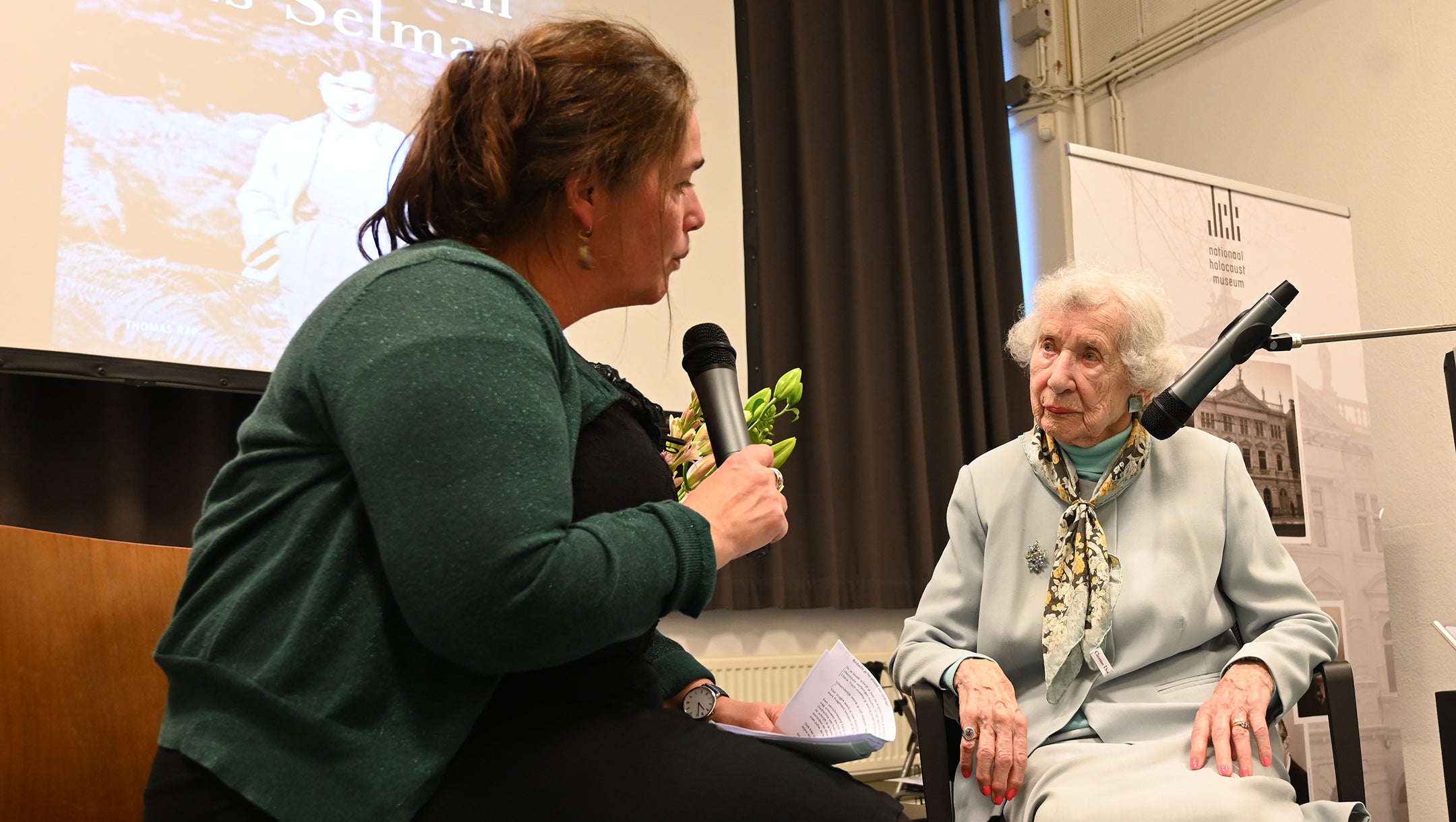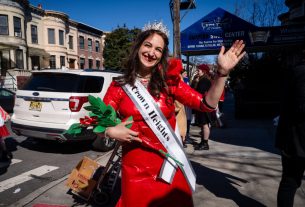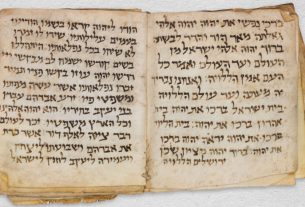When Michael Smuss died last month at 99, an era of Jewish history came to a close.
Smuss was the last known resistance fighter during the Warsaw Ghetto Uprising, when Jews rose up against their Nazi persecutors in one of the most dramatic episodes of the Holocaust.
Smuss was not the only prominent survivor to die in recent weeks. A number of survivors, several centenarians, have died in a wave that underscores the rapid disappearance of anyone alive with robust memories of the Holocaust.
Six months after the Claims Conference estimated that 220,800 Holocaust survivors remained alive, that number has dropped below 200,000, according to Greg Schneider, the group’s executive vice president. What’s more, those who were “in camps and ghettos and who can speak to that experience,” he noted, are all in their 90s and 100s.
“It just makes the loss even more dramatic,” Schneider said. “The group of people that can share that experience is really very limited today, and unfortunately, are leaving us at a much faster rate than even general survivors.”
With the population of survivors who experienced the camps and ghettoes firsthand dramatically decreasing as the months go by, Schneider said the time to hear their testimonies was now.
“There’s limited time to hear an authentic voice directly from a survivor,” said Schneider. “It’s always been urgent to listen to a survivor and to hear their story, but now we have to say with such clarity, your children, your grandchildren, future generations, will never be able to have that experience. So if you want to have that experience, you must do it immediately.”
Here are some of the stories of the prominent survivors who have died recently.
Selma van de Perre, Dutch resistance fighter who survived the Ravensbrück concentration camp
Selma van de Perre signs her book at the National Holocaust Museum in Amsterdam, Jan. 9, 2020. (Cnaan Liphshiz)
Selma van de Perre, a Dutch resistance fighter who later went on to work as a journalist for BBC Radio Netherlands, died on Oct. 20 at 103.
Born Selma Velleman on June 7, 1922, in Amsterdam, van de Perre’s father was arrested by the Nazis and taken to Camp Westerbork in 1941. After she helped her mother and sister go into hiding, they were betrayed and deported to Sobibor.
Alone in the Netherlands, van de Perre joined the Dutch resistance unit “TD Group” when she was 20, helping to carry documents and messages across the country under a non-Jewish alias.
“I started by delivering newspapers that the resistance printed,” she told YNet in a 2022 interview. “Very quickly I was carrying suitcases full of illegal papers, traveling to different towns as a courier — all under a false identity, with forged papers and a completely changed appearance.”
In 1944, van de Perre was captured by the Nazis, but because they did not know her Jewish identity, she was sent to the Ravensbrück concentration camp for women before she was liberated in 1945 by the Swedish Red Cross.
After the war, van de Perre returned to the Netherlands where she learned that her parents and sister had been killed by the Nazis. She later worked for BBC Radio Netherlands and married her husband, the Belgian journalist Hugo van de Perre, in 1955.
From 1995 onwards, van de Perre visited Ravensbrück yearly to talk about her experience during the war. In 2020, she published a memoir, “My Name Is Selma,” that was crucial to bringing attention to Jewish efforts to undermine the Nazis.
“In reality, countless Jews worked with non-Jews together in the resistance – much more than we knew during the war,” van de Perre wrote in the book. “Often, it was assumed that Jews who escaped deportation immediately went into hiding but that wasn’t always the case. It wasn’t in the interest of Jews to be identified as such. This explains to a large degree why so few Jews had been recognized for their actions.”
Ruth Posner, actress and dancer who escaped the Warsaw Ghetto

Holocaust survivor Ruth Posner speaks on a podcast for the Campaign Against Antisemitism on Jan. 26, 2023. (Screenshot)
Ruth Posner, an acclaimed dancer and actress who escaped the Warsaw Ghetto along with her aunt as a child, died on Sept. 21 at 96 by assisted suicide in Switzerland with her husband, Michael.
Born Rutenka Wajsberg in April 1929 in Warsaw, Posner was ousted from her home with her family and sent to the Warsaw Ghetto during the Holocaust. In 1942, her father arranged for her and her aunt to escape into the ghetto’s non-Jewish side.
Posner was imprisoned as a Polish Catholic after the Warsaw Uprising of 1944 (different from the previous year’s uprising by Jews in the ghetto), but escaped and hid on a farm in Germany until she escaped to the United Kingdom following the war at age 16. It is believed her parents died in the Treblinka concentration camp.
There, she was a founding member of the London Contemporary Dance Company and worked for the Royal Shakespeare Company. Posner also starred in films including “Leon the Pig Farmer” and “Love Hurts.”
Posner married her husband, Michael, in 1950, and the pair had a son, Jeremy, who died at 37. Posner is survived by one grandson.
She did not begin speaking about her experience in the Holocaust until her 80s, Posner was awarded a British Empire Medal in 2022 for her commitment to Holocaust education.
“After a dazzling career in theatre and dance, Ruth decided to begin sharing her testimony as a response to rising levels of antisemitism in the UK,” said Karen Pollock, the chief executive of the Holocaust Educational Trust, in a statement. “Although then in her eighties, she made it her mission to speak to as many young people as possible about her experiences during the Holocaust. She hoped that the leaders of tomorrow would learn the lessons of the past. Ruth was one of a kind.”
Dita Kraus, formed a secret library for the children of Auschwitz

Dita Kraus takes part in the commemorative event to mark the 79th anniversary of the end of the war and the liberation of the prisoners of the former Neuengamme concentration camp on May 3, 2024 in Hamburg, Germany. (Gregor Fischer/picture alliance via Getty Images)
Dita Kraus, a childhood survivor of Auschwitz whose story inspired the bestselling novel “The Librarian of Auschwitz,” died on Oct. 17 at 96.
Born in 1929 in Prague, Kraus was 13 when she was sent with her parents to the Terezín ghetto in 1942.
A year later, her family was sent to Auschwitz to live in Block 31, a section of the camp for Czech families which historians believe was used as a “show camp” meant to demonstrate humane conditions for Jewish prisoners. There, she received an education from Freddy Hirsch, the prisoners’ leader, and was put in charge of operating a small collection of smuggled books.
Kraus’ father, Hans, died in Auschwitz, and her mother, Elisabeth, died in 1945 after the pair were transferred to the Bergen-Belsen concentration camp.
Following the war, Kraus returned to Prague to reunite with her grandmother and aunt, and later married her husband, Otto, who had worked as an instructor at Auschwitz.
The couple moved to Israel in 1949 and both taught at the Hadassim Youth Village for 30 years. Kraus is survived by three children and four grandchildren.
“In her free time, Dita searched for flowers in the fields to draw them precisely and delicately, apparently instead of looking back or trying to understand why, which is a complicated question that humans have no good answer to,” Kraus’ son, Ron, wrote in a post on Facebook. “We must fight against hatred, which is not its essence, and try to find in the wide field the beautiful flowers that the Lord’s grace created.”
Kraus’ story inspired the bestselling 2012 novel “The Librarian of Auschwitz” by Spanish writer Antonio Iturbe. Her own memoir, “A Delayed Life,” was published in 2020.
“With great sorrow, I received the news of the death of Dita Krausová – a brave Czech compatriot and writer who survived the horrors of the Holocaust,” Czech Foreign Minister Jan Lipavský wrote in a post on X. “I fondly recall our meetings and her eternal spirit, with which she won over everyone around her.”
Yehuda ‘Idek’ Friedman, joined a secret effort that sought revenge against the Nazis
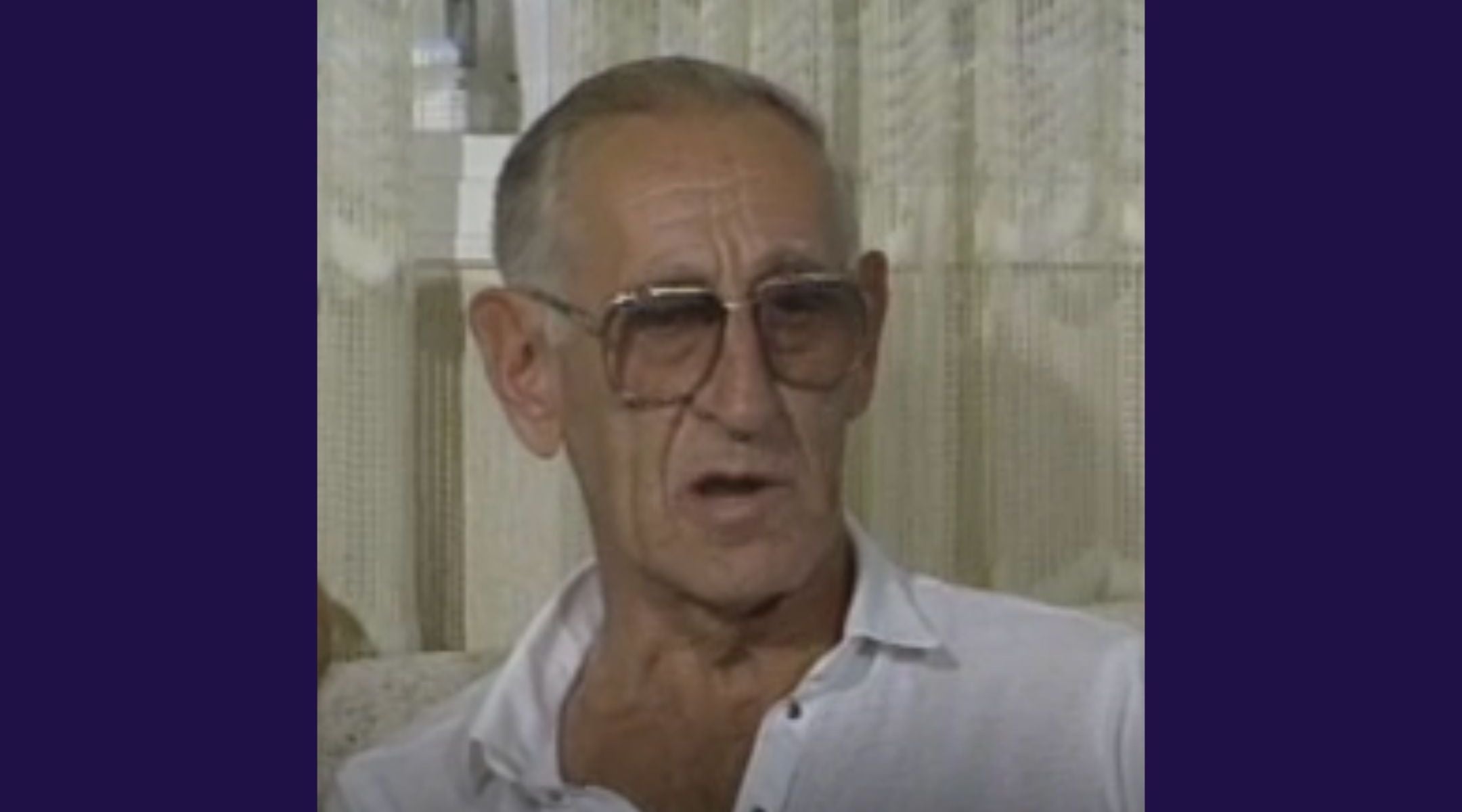
Yehuda Friedman is interviewed by the United States Holocaust Memorial Museum on Oct. 9, 1987. (Screenshot)
Yehuda ‘Idek’ Friedman, a member of the secret postwar paramilitary group Nakam that attempted to poison German prisoners of war, died in October at 105.
Born in 1919 in Kraków, Poland, Friedman was one of seven children. Though his two older brothers emigrated to Mandatory Palestine prior to World War II, after the war broke out Friedman and the rest of his family were forced into the city’s Jewish ghetto.
During the war, Friedman was given a work permit to leave the ghetto and work on vehicles in the Gestapo garages.
Friedman smuggled food and supplies to his family inside the ghetto, but on March 13, 1943, during the ghetto’s final liquidation, all of his family members were taken from their hiding spot and shot in the Plaszow concentration camp.
Following the war, Friedman moved to Israel and joined Nakam, or Hebrew for “revenge,” a secret paramilitary group led by Abba Kovner that aspired to kill 6 million Germans in revenge for the Holocaust.
Nakam initially planned to poison the water system in Nuremburg, Germany, but after that plan was stopped and Kovner was arrested en route to the city, the group later poisoned loaves of bread in the city and sickened 2,000 German prisoners of war at Langwasser internment camp.
The group’s efforts were documented in a 2021 book titled “Nakam: The Holocaust Survivors Who Sought Full-Scale Revenge” by Dina Porat. In 2018, Friedman was interviewed in the 2018 documentary “Holocaust: The Revenge Plot” on the United Kingdom’s Channel 4.
Manfred Goldberg, secretly celebrated his bar mitzvah in the Riga Ghetto
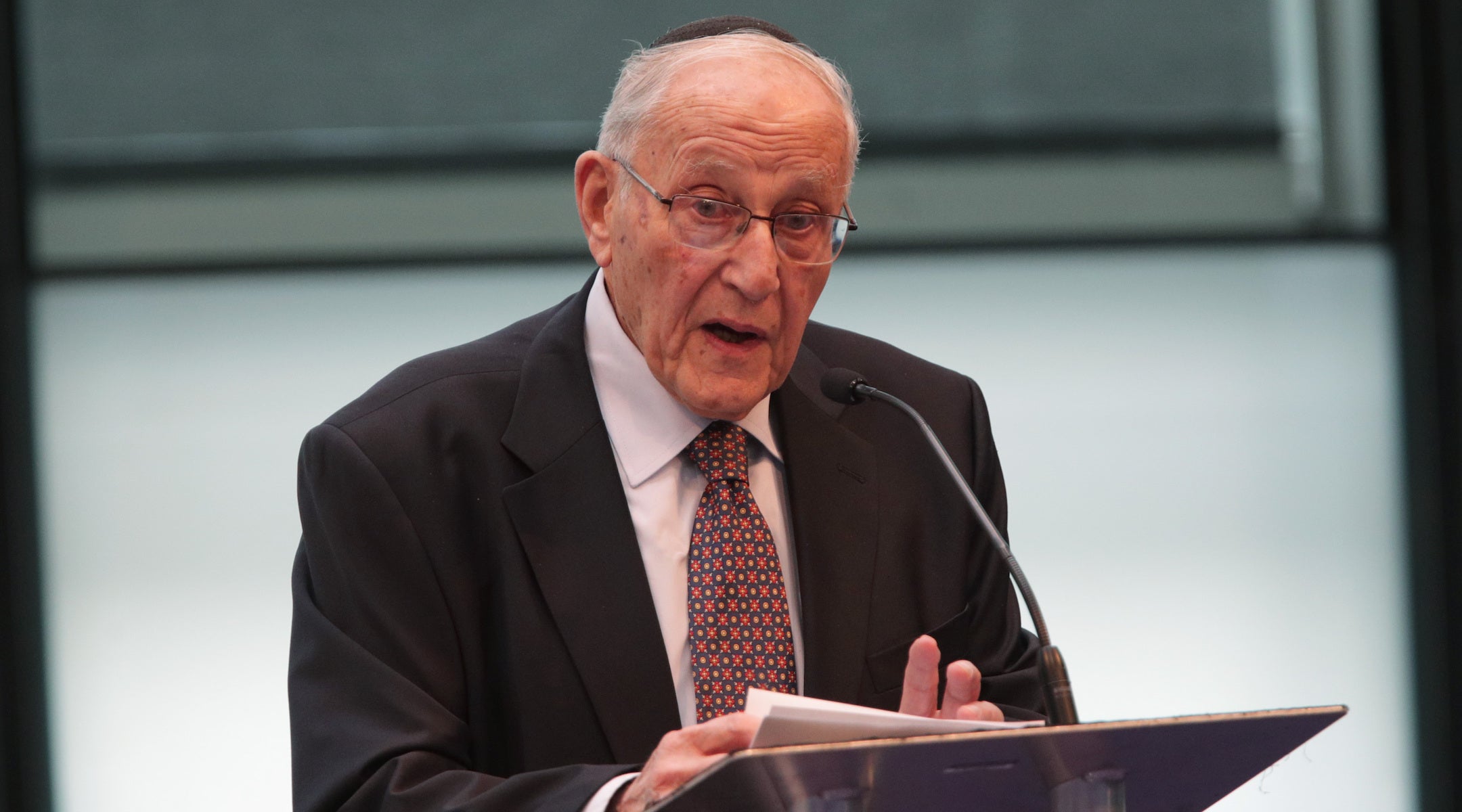
Holocaust survivor Manfred Goldberg gives a testimonial during a ceremony for Holocaust Memorial Day at City Hall in London on Jan. 22, 2018. (Yui Mok/PA Wire)
Manfred Goldberg, a celebrated Holocaust educator in the United Kingdom who was awarded as a Member of the Order of the British Empire last year, died Nov. 6 at 95.
Goldberg was born on April 21,1930, in Kassel, Germany, to an Orthodox Jewish family, and was just 3 when the Nazis came into power in 1933.
In 1939, after the Nazis threatened to send his father to a concentration camp, his mother, Rosa, secured his father an emergency visa and he fled to Britain. But while the family worked to join him, just 10 days later the Nazis invaded Poland and the family was split apart.
In 1941, Goldberg’s remaining family was sent to the Riga Ghetto in Latvia, where Goldberg was able to celebrate his bar mitzvah in secret despite the harsh conditions and brutality they faced.
He was working off site when the SS took children away from the ghetto, and Goldberg never saw his younger brother Herman again.
“The next morning, both my mother and I had to line up and go to work as though nothing untoward had happened,” Goldberg told the Associated Press last year. “The mourning took place internally, but if we had refused to go to work, we would have lost our lives.”
Months later, and weeks before the ghetto was liquified, Goldberg and his mother were sent to the Stutthof concentration camp in August 1944.
After eight months in the camp, Goldberg and his mother were forced on a death march as the Allied forces approached. They were liberated on May 3, 1945.
Goldberg immigrated to Britain in September 1946 where he was reunited with his father, and later went on to get a university degree in electronics. He also married and had four sons and several grandchildren.
Later in life, Goldberg traveled with the Holocaust Educational Trust to give testimony to his experiences, and became one of the most celebrated survivors in the United Kingdom.
“I’m only a drop in the ocean,’’ he said in an interview at the Jewish Care Holocaust Survivors’ Center in London last year. “But I’ve made up my mind that as long as God gives me the strength, physical and mental, to continue doing it, I have committed myself to keep on doing it. So that’s why I’m here at age 94, speaking to you.”
In June 2024, Goldberg was awarded as a Member of the Order of the British Empire in the King’s Birthday Honours for services to Holocaust education and remembrance.
“Manfred’s passing leaves an irreplaceable void in our hearts and in our community. He was truly extraordinary,” said the chief executive of the Holocaust Educational Trust, Karen Pollock, in a statement. “Having endured unimaginable horror and loss, he chose to look forward, dedicating his life to ensuring that the atrocities of the Holocaust would never be forgotten and that antisemitism in all its guises would be confronted.”
Michael Smuss, the last remaining resistance fighter of the Warsaw Ghetto Uprising
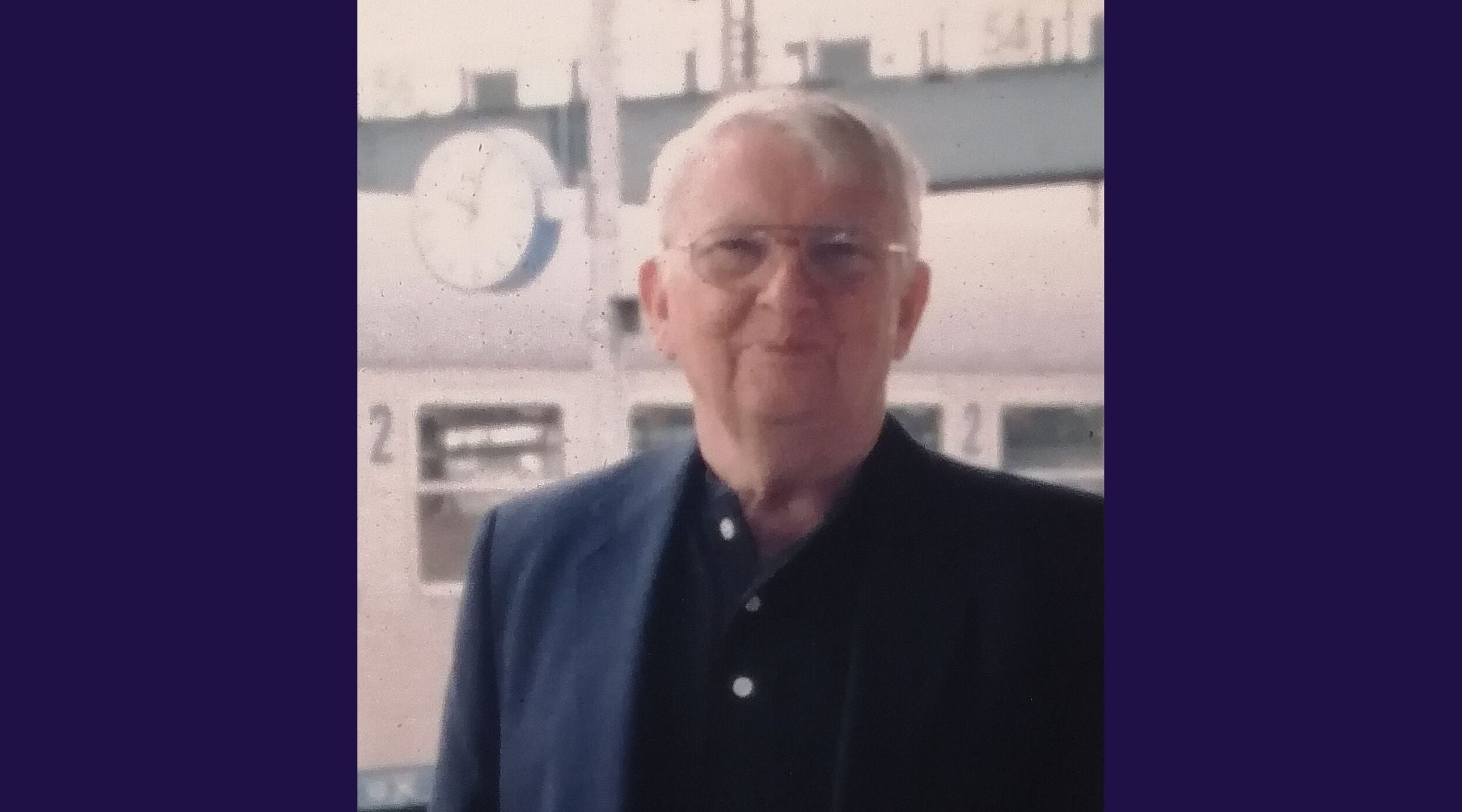
Michael Smuss, the last remaining Warsaw Ghetto Uprising fighter, died on Oct. 21, 2025 at 99. (Wikimedia Commons)
Smuss, the last known remaining fighter from the Warsaw Ghetto Uprising who later became a painter, died on Oct. 21 at 99.
Smuss was born in 1926 in what is now known as Gdansk, Poland, before he was forced into the Warsaw Ghetto along with half a million Jews during World War II.
There, he joined the Jewish resistance in the ghetto led by Mordechai Anielewicz and helped the group obtain a thinning substance that was used to make Molotov cocktails.
On April 19, 1943, just after his 17th birthday, when the Nazis entered the ghetto to liquidate the remaining Jewish population, Smuss joined the resistance and threw Molotov cocktails from the roofs. He was one of the only resistance fighters to survive the monthlong uprising.
“I thank God for saving me. He pulled me out of there for a reason — so I could tell people about what happened,” Smuss told the Times of Israel in April.
Following the uprising, Smuss moved through different concentration camps, including Majdanek, Budzyn, Flossenberg and Dachau, before he was freed after surviving a death march in the spring of 1945.
After the war, Smuss moved to the United States before eventually emigrating to Israel where he took up painting to process his trauma. His art is currently on display in the permanent collection of the Florida Holocaust Museum.
“From rooftop defiance wielding Molotov cocktails to the darkest camps of the Holocaust, Smuss embodied the enduring spirit of Jewish Resistance. His survival became a lifelong mission: to teach, to paint and to confront the lies of forgetting,” wrote the European Jewish Congress in a post on X. “As the archives may close on the era of living witnesses, our responsibility to remember, educate — and act — remains.”
Power the news that matters to you. Before 2025 ends, help (JR)’s independent, award-winning newsroom document Jewish history in real-time.

